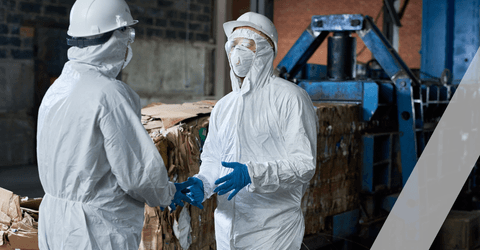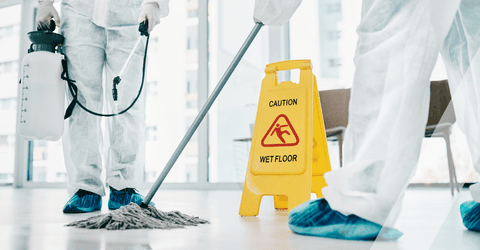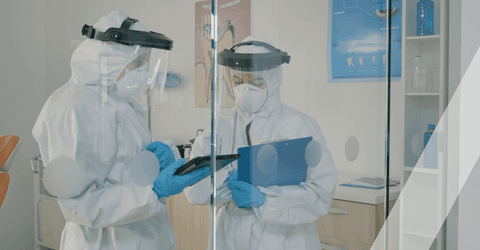
A guide to the chemical PPE, chemical-resistant clothing, and hazmat suits that keep you safe at work.
PPE and chemical-resistant clothing protect workers against chemicals that cause an adverse effect on skin or when inhaled could cause internal damage. To protect against the risk of direct skin contact with chemicals, it’s vital the correct PPE and chemical-resistant clothing is worn.
PPE is a vital part of working with chemicals where there is a high risk of harm involved. Many cleaning, developing, and etching procedures include the substantial use of harmful and dangerous acids, bases, and solvents that can cause serious harm or even death when exposed to them.
But before using PPE, it’s important to use the National Institute for Occupational Safety and Health (NIOSH) hierarchy of controls to avoid any contact with chemicals in the workplace. The hierarchy of controls has five levels of actions to reduce or remove hazards. This is the preferred order…
• Elimination – Physically remove the hazard.
• Substitution – Replace the hazard.
• Engineering controls – Isolate people from the hazard.
• Administrative controls – Change the way people work.
• Personal protective equipment (PPE) – Protect the worker with PPE.




After following the hierarchy of controls to ensure PPE is necessary, there are several types of PPE that need to be considered. We can help you understand what they do and how they protect you...
• Overalls and aprons protect the body from chemical or acid spills and splashes.
• Gloves protect the hands from absorbing substances, cuts, abrasions, and chemical burns.
• Safety goggles and face shields protect the eyes and face from liquid chemicals or acids, light radiation, and flying particles.
• Respirators are used for protection against chemical fumes, other acids, and vapours.
• Special footwear protects the feet against possible chemical spills.
A Hazmat suit (short for hazardous material suit) is a full body garment designed to protect the wearer against dangerous materials or substances. These are used by workers operating in toxic or infectious environments. This level of chemical protection is used with respiratory PPE support and often combined with self-contained breathing apparatus (SCBA) to ensure a supply of breathable air.
Most suits used in Europe are covered by EU Norms, divided into six types (levels) of protection..
• Type 1: Protects against liquid and gaseous chemicals. Gas tight. (EN 943 part 1).
• Type 2: Protects against liquid and gaseous chemicals. Non gas tight. (EN 943 part 1).
• Type 3: Protects against liquid chemicals for a limited period. Liquid jet tight. (EN 14605).
• Type 4: Protects against liquid chemicals for a limited period. Liquid saturation tight. (EN 14605).
• Type 5: Protects against airborne dry particulates for a limited period. (EN ISO 13982-1).
• Type 6: Protects against a light spray of liquid chemicals (EN 13034).
If you want to know more about how to protect people that work with or near chemicals and in hazardous environments with PPE, fill out a contact form below or call 01202 718000.